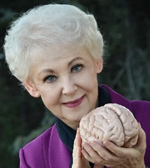The Magic of Emotional Intelligence - Part 12
EQ & Communication
©Arlene R. Taylor, PhD www.ArleneTaylor.org

Emotional Intelligence skills can help you clearly communicate your thoughts and influence others with your words. The conscious brain uses language and turns what you say, read, and hear into brain pictures. This allows the huge subconscious mind—that does not use language per se and that is more powerful than the conscious mind—to follow the pictures language created. Thus is critically important to use the most effective words when communicating what you want to happen.
When telling your brain what to do, avoid the word “I” as it tends to trigger the ego in the mammalian (2nd brain) layer. Avoid future-tense words like “I’m going to….” The brain understands future tense and may think: That is then and this is now. When now comes, I’ll help you—if you still want to do it.
Brain imaging studies have discovered a more effective self-talk style that creates more accurate brain pictures. Use your given name so the brain knows who is talking, the pronoun you, and present tense words to tell your brain what to do. Say, “Farquart, you are walking for 15 minutes.”
Use positive words and phrases. Negatives are a two-step process. The word “don’t” implies that you should do the opposite of what you just said (or heard). However, the brain may either miss the don’t or fail to convert the first picture it created. The phrases “Don’t touch the stove,” (negative) and “Keep your hand away from the stove,” (positive) create entirely different pictures in the brain.
Stop talking about what you do not want to happen. The goal is to trigger the brain to create a picture of what you want to happen for the subconscious to follow. Say: “Sally, speak quietly,” rather than “Don’t yell.” “Sam, remember your homework,” not “Don’t forget your homework.” “Ingrid, share with your sister,” instead of “Don’t be so selfish.” “Tom, you are learning,” rather than “Don’t be such a dunce!”
Speak so the brain creates a picture of what you do want to happen—in your brain and in the brains of others. It’s a win-win!